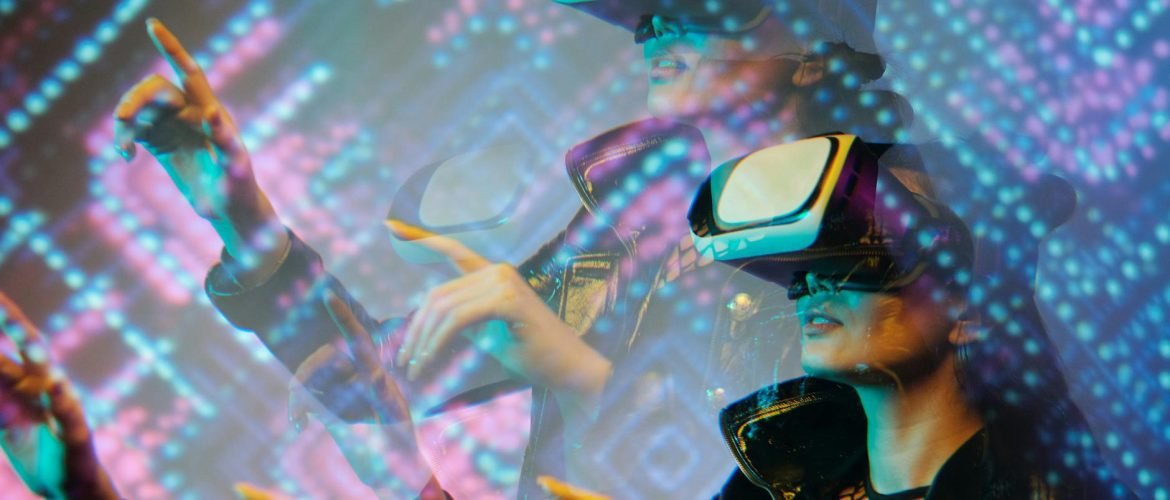Understanding Holographic Displays
How Holographic Displays Work
Holographic displays operate by reflecting digital content through glass with a special coating, known as glass optics. This creates the illusion of three-dimensionality, tricking your brain into interpreting the content as a free-floating hologram.
A 3D holographic display functions by reflecting high-definition or 4K digital content through these coated glass optics, creating an illusion of three-dimensionality that generates the sensation of a free-floating hologram when viewed at a specific angle.
Holograms themselves are recordings of reflected light capturing the interference between reference and object beams. This interference forms a pattern of fringes, which are then reproduced to create a three-dimensional image (HowStuffWorks).
Applications of Holographic Displays
Holographic displays possess a wide range of applications across various industries:
-
Marketing and Advertising: These displays are essential tools for communicating technical information effectively. They present product details, highlight features, and explain unique selling points in a visually appealing manner, making them invaluable for marketing and advertising purposes. For example, you might find them used in holographic communication technology.
-
Education and Training: Holographic displays are used to provide an interactive and immersive educational experience, allowing for the visualization of complex concepts, such as anatomy or machinery, in three dimensions. They offer a new way to engage students and trainees, enhancing the learning process.
-
Medical and Military Applications: In the medical field, holographic displays are used for visualizing patient scans in 3D, aiding in diagnosis and surgical planning. In military applications, they are used for strategic planning by displaying terrain and operational data in three dimensions, providing a clearer understanding of the environment (3D Hologram Communication).
These applications highlight the diverse capabilities of holographic displays in making complex information more accessible and engaging through visual storytelling. For more on this, you can read about holographic video calls and virtual holography.
Evolution of Holographic Technology
Historical Milestones
The concept of holography can be traced back to 1947, when Hungarian scientist Dennis Gabor was working on improving the resolution of electron microscopes. He coined the term “holography” from the Greek words “holos,” meaning whole, and “gramma,” meaning message (Wikipedia). Gabor’s pioneering work laid the foundation for future developments in holographic technology.
In 1972, Lloyd Cross achieved a significant breakthrough by creating the first moving 3-dimensional image using white-light transmission holography. This milestone expanded the potential applications of holographic displays (Wikipedia). The ability to create dynamic, three-dimensional images marked a turning point in the evolution of the technology.
Fast forward to 2005, the University of Texas developed the laser plasma display which marked the beginning of true 3D holographic displays. This groundbreaking technology allowed images to appear in mid-air without the need for screens or external media, even though it initially lacked resolution and picture quality (Wikipedia). This advancement opened new possibilities for interactive and immersive experiences.
Modern Breakthroughs
The evolution of holographic technology continued with significant advancements in the 21st century. In 2013, Michael Bove of MIT presented the holographic television display, utilizing a Microsoft Kinect camera to capture subjects in a 3D space. This innovative technology provided a fully three-dimensional image viewable from all angles. Bove predicted that holographic televisions would become widely available by 2023.
Founded in 2002, MDH (Magical Dynamic Hypnotic) Hologram Ltd emerged as a global leader in holographic technology. The company’s patented 3D holographic projection system was first installed at the Swarovski Museum in Austria in 1996. Among their numerous innovations, EyeMagic has become the top-selling product, showcasing their expertise in the field.
| Year | Event | Significance |
|---|---|---|
| 1947 | Conceptualization of Holography by Dennis Gabor | Foundation laid for future advancements |
| 1972 | Lloyd Cross creates first moving 3D image | Expanded possibilities of holographic displays |
| 2005 | University of Texas develops laser plasma display | Introduction of true 3D holographic displays |
| 2013 | Michael Bove presents holographic TV | Fully 3D images viewable from all angles |
| 2002 | MDH Hologram Ltd founded | Leader in holographic technology innovations |
Holography has come a long way since its inception, and it continues to evolve rapidly. As you explore the future of holographic displays, consider the numerous applications in holographic communication technology, 3D hologram communication, and virtual holography.
With these advancements, the future of holography promises to be even more dynamic and transformative.
Practical Use Cases of Holographic Displays
Holographic displays have a broad range of practical applications. Here are some key areas where this technology is making a significant impact:
Marketing and Advertising
Holographic displays offer a unique opportunity for marketers and advertisers to create immersive and captivating visual experiences. By leveraging neuromarketing principles, these displays capture attention in crowded settings like retail stores, expos, and public spaces (Realfiction). The brain is tricked by seemingly free-floating holograms, which evoke emotions and trigger the senses, making the communicated information more memorable.
Holograms enhance brand experiences, leading to increased shareability as consumers are more likely to share their hologram experiences on social media. This contributes to the viral potential of holographic marketing campaigns.
| Use Case | Example |
|---|---|
| Point of Sale Displays | Attention-grabbing promotional content in retail stores. |
| Brand Launch Events | Engaging holographic presentations to introduce new products. |
| Public Advertisements | Large-scale holograms in public spaces to capture and retain viewer attention. |
Education and Training
Holographic displays have transformative potential in educational settings, providing students and trainees with interactive learning environments. This technology allows for the projection of 3D animations, images, or videos on physical objects, creating mixed reality experiences that enhance understanding and retention.
- Classroom Learning: Teachers can use holographic displays to bring subjects like history, science, and geography to life, offering students visual and interactive lessons.
- Corporate Training: Businesses can utilise holographic technology for training sessions, where complex concepts are better explained through 3D visualisations.
- Remote Education: Holographic video calls can facilitate virtual classrooms, allowing teachers to interact with students in a more engaging format.
Medical and Military Applications
In the medical field, holographic displays are revolutionising the way professionals plan and conduct surgeries. This technology greatly assists in the study and mapping of surgical locations, simplifying the research and planning process (Analytics Steps). Surgeons can manipulate 3D holograms of patient anatomy, providing a comprehensive understanding of the surgical site and improving precision.
| Application | Example |
|---|---|
| Surgical Planning | 3D mapping of surgical locations to enhance precision (Analytics Steps). |
| Medical Training | Interactive simulations for medical students and professionals. |
In military applications, holographic technology provides advanced training tools and strategic planning assistance. Holograms can be used to create realistic simulations for battlefield strategies, equipment training, and medical emergencies. These applications offer a safer and more controlled environment for preparing military personnel.
- Battlefield Simulations: Realistic holographic environments for strategic training.
- Equipment Training: Hands-on practice with 3D holograms of military equipment.
- Medical Training: Enhanced learning experiences in trauma care and emergency response.
Holographic displays promise to reshape various sectors significantly. By embracing this innovative technology, you can stay ahead in the rapidly evolving landscape of holographic communication technology and 3d hologram communication. To learn more about future trends and opportunities, visit our section on virtual holography.
Future Prospects for Holographic Displays
Challenges and Opportunities
As holographic display technology continues to evolve, it faces several challenges and opportunities that could shape its future development. One key challenge is the high cost of production, which includes the expense of developing advanced display materials and intricate projection systems. This makes holographic displays less accessible for mass-market adoption.
However, these challenges create significant opportunities as well. The current trend towards more immersive and interactive viewing experiences has opened new avenues where holographic displays can excel. For instance, in marketing and advertising, holographic displays can offer a unique viewing experience that enhances memorability and shareability, contributing to the viral potential of campaigns. This can help brands stand out in a crowded market, providing a competitive advantage.
Another opportunity lies in reducing content production costs. The use of holographic television could potentially streamline the process of creating immersive and interactive content, making it a viable option for various sectors, including entertainment and education. Moreover, continued technological advancements are expected to drive increased usage of holographic displays as consumers seek enhanced experiences.
Growth Predictions and Market Trends
The market for holographic displays is poised for substantial growth in the coming years. According to various market analyses, the holographic display market is projected to grow by 27.3% from 2020-2025, with significant growth rates expected in North America and Asia (Future of Marketing Institute). This growth will be driven by increasing demand for advanced, immersive technologies in sectors such as education, healthcare, and retail.
A notable trend is the expected increase in the value of the holographic display market, which is projected to exceed $23 billion by 2032. This growth will be propelled by the rising demand for haptic feedback in various applications, enhancing user interaction and experience (Yahoo Finance).
| Year | Market Size ($ Billion) |
|---|---|
| 2020 | 4.15 |
| 2025 | 9.45 |
| 2032 | 23+ |
Moreover, sectors such as medical and military applications are also expected to see increased adoption of holographic displays due to their ability to provide more precise and interactive visualisations. For more on these applications, you can check out our section on Medical and Military Applications.
As holographic display technology continues to advance, it will be crucial for developers and marketers to stay informed about the latest trends and challenges. By understanding the evolving landscape, stakeholders can better navigate the opportunities and obstacles that lie ahead.
Explore our related articles on 3D hologram communication and holographic video calls for further insights into how this transformative technology is shaping the future.




